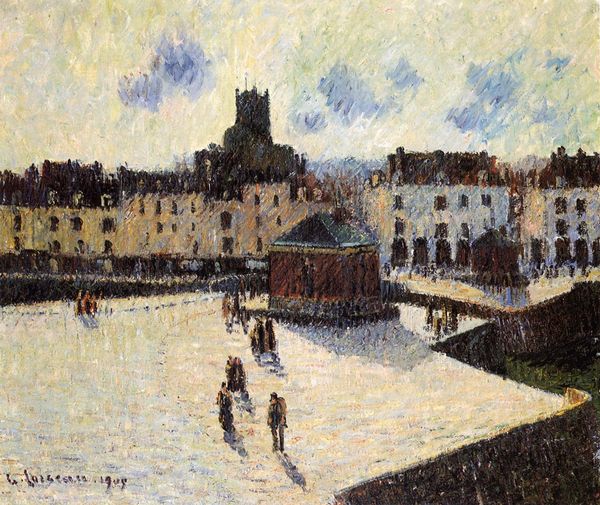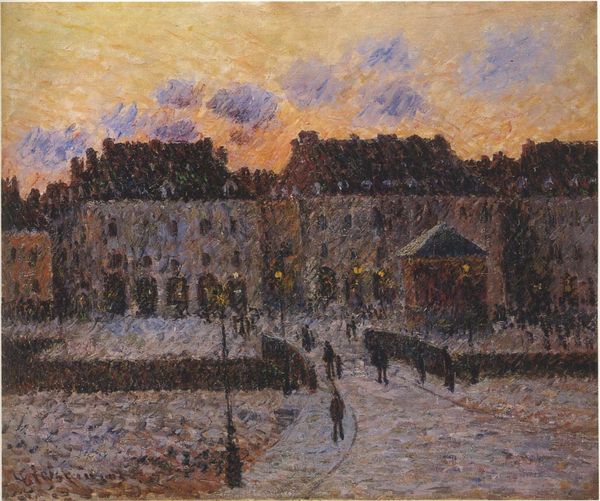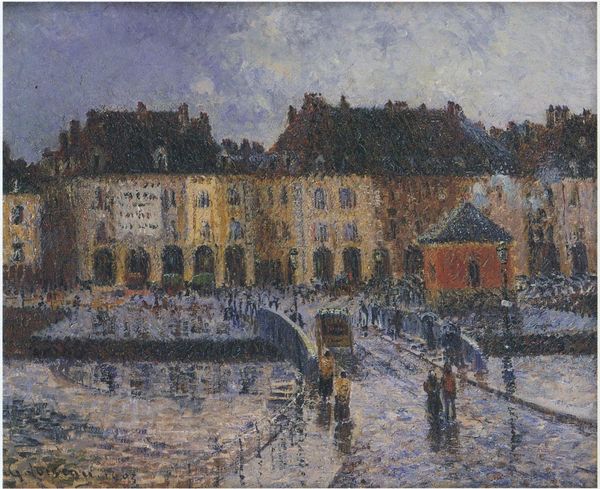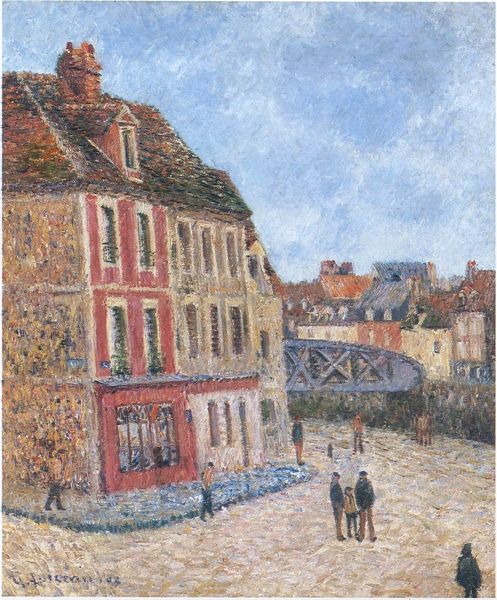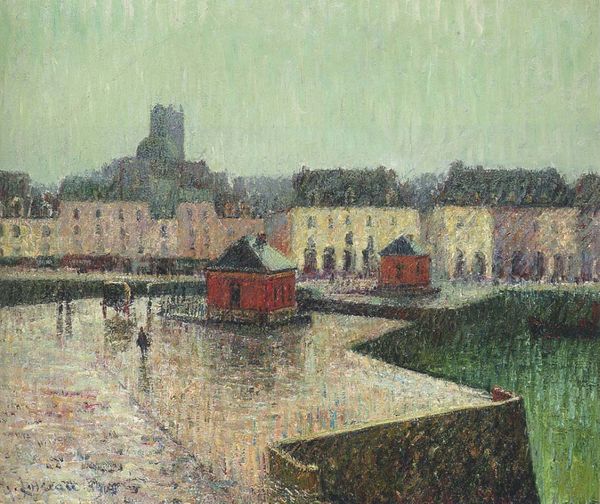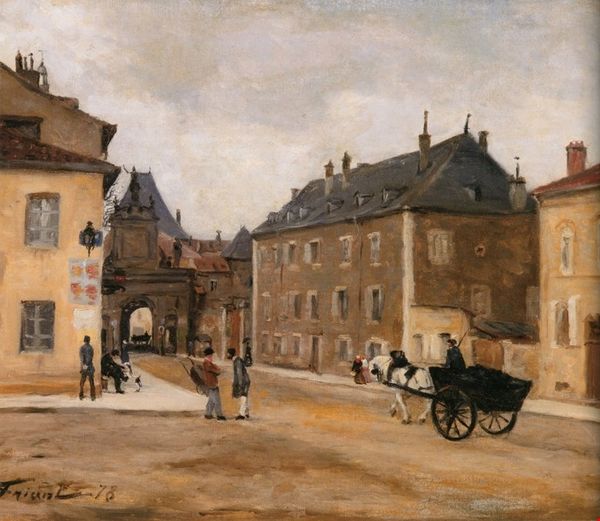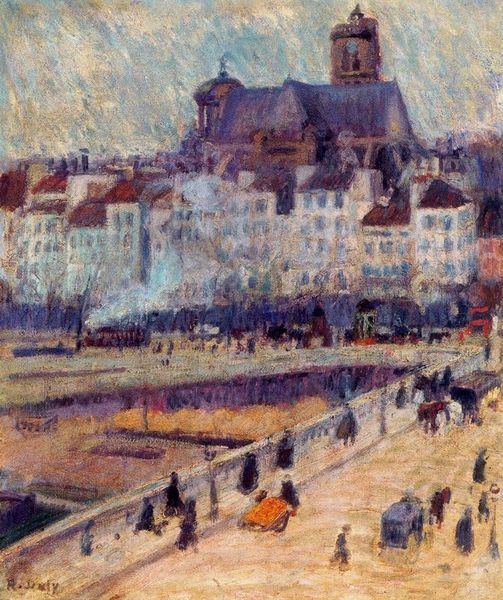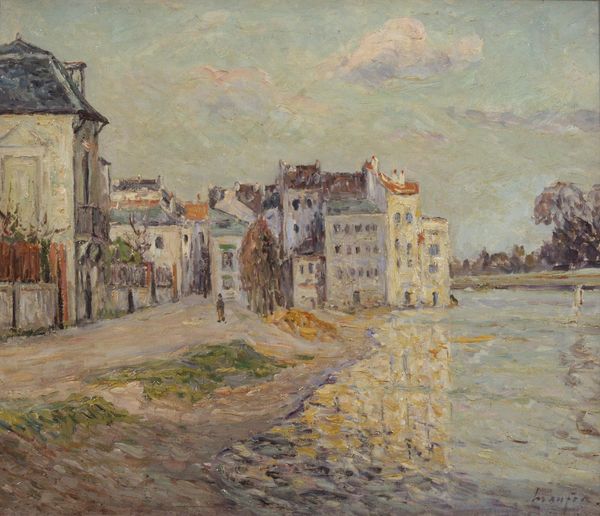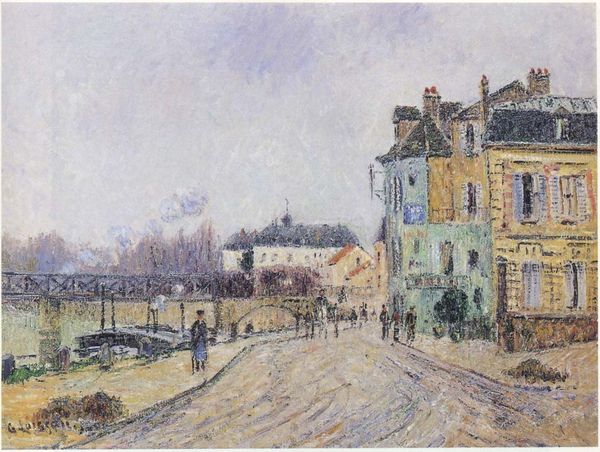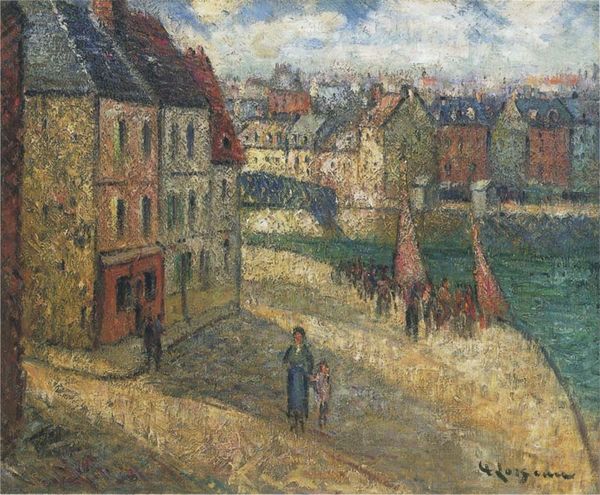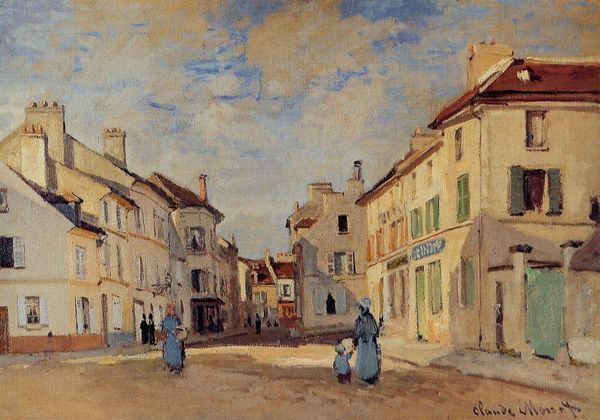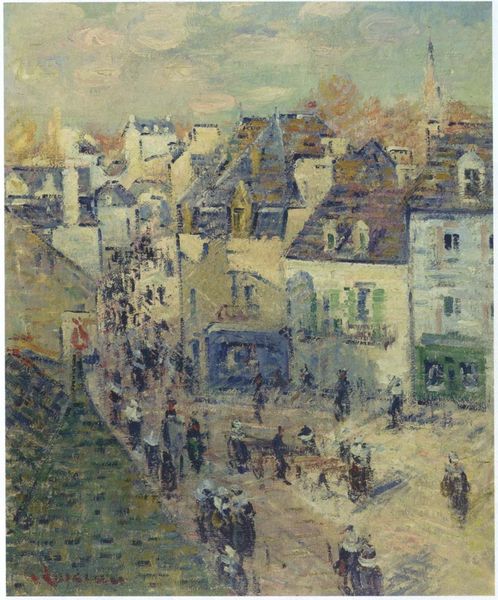
Copyright: Public domain
Editor: Gustave Loiseau’s "Quay at Dieppe," painted in 1902, is just lovely. The oil on canvas uses such tiny brushstrokes to capture the port. It feels both bustling and still, like a moment captured in time. What do you see in this piece, looking at it through a more critical lens? Curator: Beyond the Impressionistic charm, I see a snapshot of societal structure and labor. The quayside, usually a place of commerce and movement, feels almost frozen here, doesn't it? What labor is absent in this scene? Consider who profits from the activity hinted at in the background and what their relationship is to the artist himself? Editor: I hadn't thought about it like that. The brushstrokes seem to dance across the surface, and the figures are so small they feel incidental. They lack…agency, maybe? Is Loiseau intentionally depicting social class? Curator: Possibly not consciously, but art rarely exists in a vacuum. It’s impossible for us to say whether Loiseau's intention was a portrait of urban life and capitalism in France. The hazy impressionistic style serves to both capture an instance of beauty and remove the hard labor of those that maintain its order and charm. In what ways do you think Loiseau represents a certain ideal, consciously or unconsciously, of French society? Editor: It does feel idealized now that you mention it, almost sanitized. Like a postcard designed to ignore social issues. Curator: Exactly! And by acknowledging that, we can view it not just as a pretty picture, but as a document, a moment of history caught in the crosshairs of class and representation. Editor: That's a much richer way to understand the artwork, thank you. It shows that, at the very least, Impressionism's visual qualities may hide the social structure underpinning it. Curator: Precisely! Now we see how to engage with a work to expose the larger political context.
Comments
No comments
Be the first to comment and join the conversation on the ultimate creative platform.
